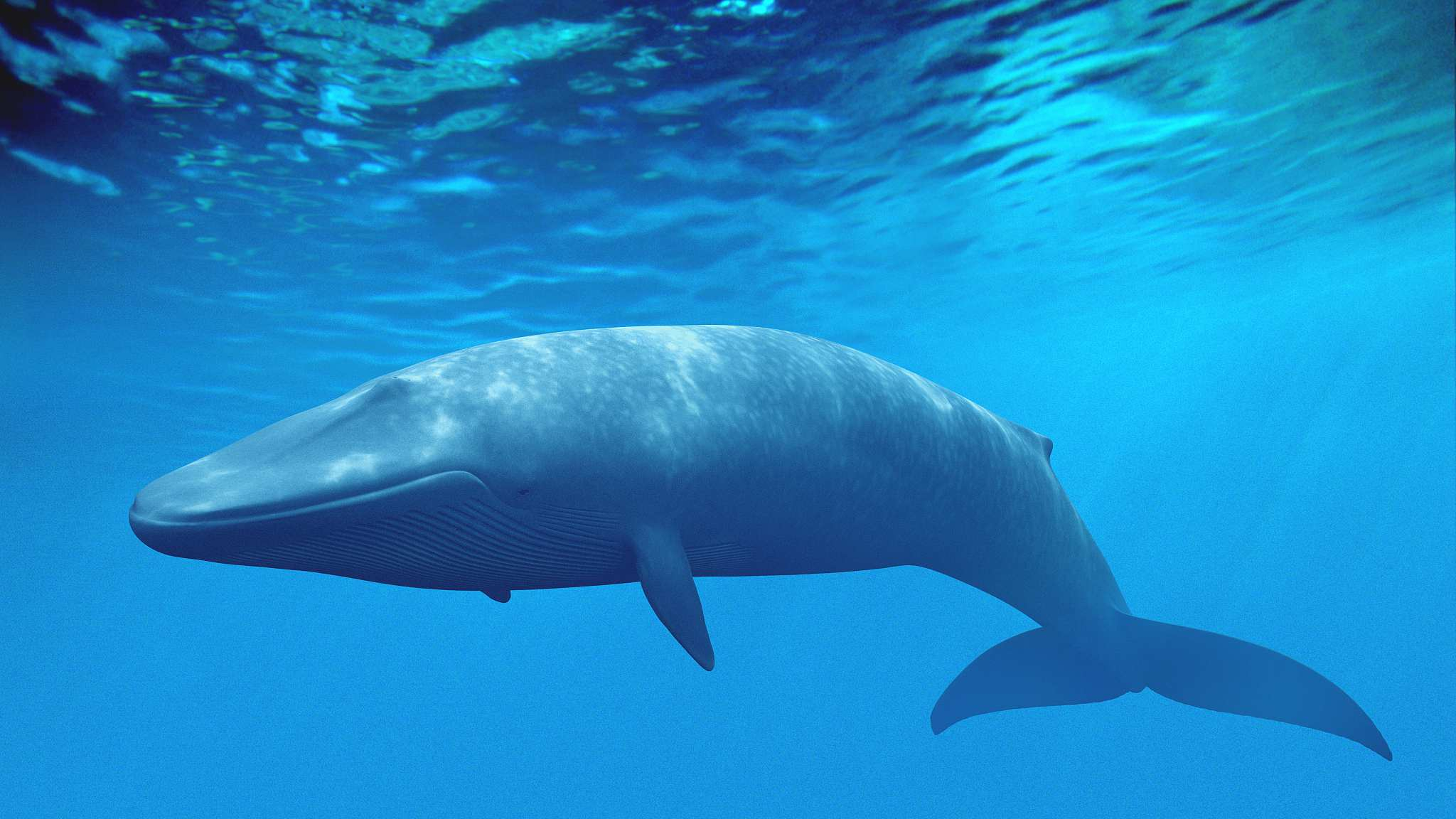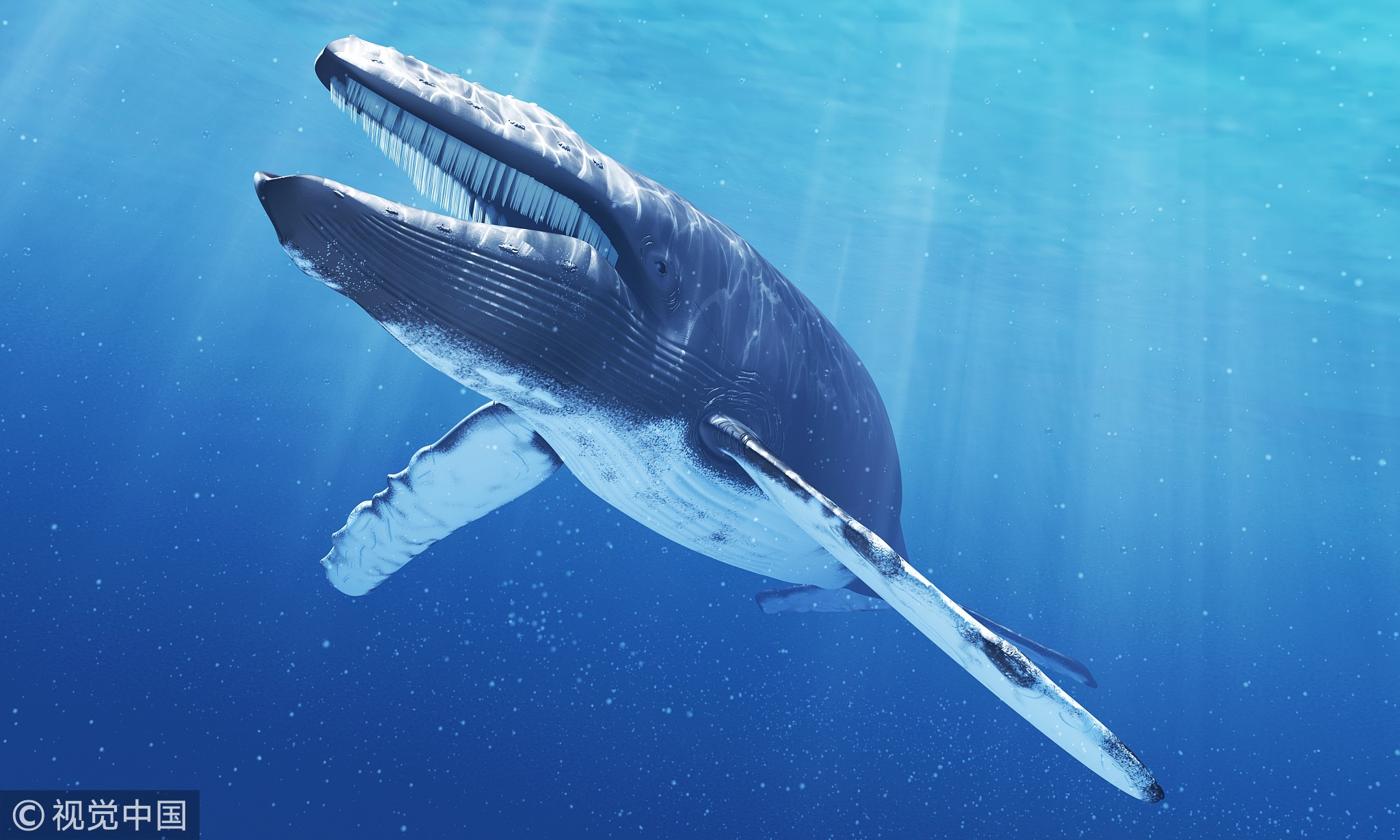
Science
12:27, 25-Nov-2018
Chinese, American scientists reveal structures of tough whale baleen
Updated
12:19, 28-Nov-2018
CGTN

Chinese and American researchers have for the first time uncovered how baleen whales' "teeth" withstood a lifetime of forces generated by water flow and prey without fracturing.
The finding published in this week's Advanced Materials journal could lend clues to developing advanced engineered materials.
Whale baleen is the filter-feeding apparatus inside the oral cavity of baleen whales, consisting of a series of parallel plates suspended from the palate down both sides of the mouth. The baleen made mostly of a mineralized material of the keratins allows for efficient feeding on great quantities of small zooplankton.
The research led by Wang Bin from the Shenzhen Institutes of Advanced Technology of the Chinese Academy of Sciences showed that the nanoscale structure of baleen's intermediate filaments and mineral crystals, embedded in an amorphous matrix, increased its stiffness and strength.

Whale baleen is the filter-feeding apparatus inside the oral cavity of baleen whales. /VCG Photo
Whale baleen is the filter-feeding apparatus inside the oral cavity of baleen whales. /VCG Photo
Also, they found that microscale tubular lamellae in it controlled the direction of crack propagation in case of fracture.
"In the longitudinal direction, cracks propagate with ease, leading to desirable delamination, fraying, and formation of bristles, necessary for the filtering action," said Marc A. Meyers from the University of California, San Diego.
"In the transverse direction, crack propagation is resisted by the tubular structure, providing the required resistance to water flow and prey impact," said Meyers.
Wang said it was "amazing and exciting" to study the baleen, and the new findings could help achieve the "ultimate goal" of developing engineered materials for the marine environment.
(Top image via VCG)
Source(s): Xinhua News Agency

SITEMAP
Copyright © 2018 CGTN. Beijing ICP prepared NO.16065310-3
Copyright © 2018 CGTN. Beijing ICP prepared NO.16065310-3